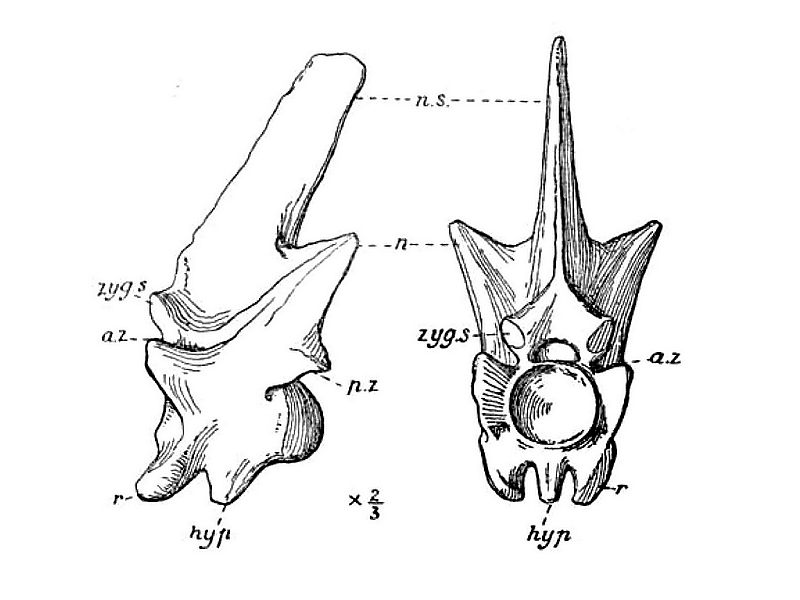Pterosphenus on:
[Wikipedia]
[Google]
[Amazon]
 ''Pterosphenus'' is an extinct genus of marine
''Pterosphenus'' is an extinct genus of marine

 ''Pterosphenus'' is an extinct genus of marine
''Pterosphenus'' is an extinct genus of marine snake
Snakes are elongated, Limbless vertebrate, limbless, carnivore, carnivorous reptiles of the suborder Serpentes . Like all other Squamata, squamates, snakes are ectothermic, amniote vertebrates covered in overlapping Scale (zoology), scales. Ma ...
of the Eocene
The Eocene ( ) Epoch is a geological epoch (geology), epoch that lasted from about 56 to 33.9 million years ago (mya). It is the second epoch of the Paleogene Period (geology), Period in the modern Cenozoic Era (geology), Era. The name ''Eocene' ...
period.
Classification
''Pterosphenus'' belong to theAlethinophidia
:''Common names: advanced snakes.''
The Alethinophidia are an infraorder of snakes that includes all snakes other than blind snakes and thread snakes. Snakes have long been grouped into families within Alethinophidia based on their morphology, e ...
snakes, a clade which includes all snakes outside of blind and thread snakes, and more specifically to the extinct Palaeophiidae. Its closest relative is '' Palaeophis'', of which both belong to the subfamily Palaeopheinae. Five species are known, ''P. schucherti'' from North America, ''P. sheppardi'' from South America, ''P. schweinfurthi'' from northern Africa and ''P. biswasi'', and ''P. kutchensis'' from Asia.
Description
While only known from partial remains, enough has been found of ''Pterosphenus'' to suggest it was a large reptile. Based on the regression model used to estimate the length of boids, the most reliable length estimate lies between ; the largest vertebra may have belonged to an individual reaching in length. Its body was strongly laterally compressed as an adaptation to pelagic life.
Palaeoenvironment and Palaeoecology
A marine ocean dweller, ''Pterosphenus'' lived in the shallow seas of the future eastern US (fossils are known fromTexas
Texas (, ; Spanish language, Spanish: ''Texas'', ''Tejas'') is a state in the South Central United States, South Central region of the United States. At 268,596 square miles (695,662 km2), and with more than 29.1 million residents in 2 ...
, Louisiana
Louisiana , group=pronunciation (French: ''La Louisiane'') is a state in the Deep South and South Central regions of the United States. It is the 20th-smallest by area and the 25th most populous of the 50 U.S. states. Louisiana is borde ...
, Mississippi
Mississippi () is a state in the Southeastern region of the United States, bordered to the north by Tennessee; to the east by Alabama; to the south by the Gulf of Mexico; to the southwest by Louisiana; and to the northwest by Arkansas. Miss ...
, and Arkansas
Arkansas ( ) is a landlocked state in the South Central United States. It is bordered by Missouri to the north, Tennessee and Mississippi to the east, Louisiana to the south, and Texas and Oklahoma to the west. Its name is from the Osage ...
and up north to New Jersey
New Jersey is a state in the Mid-Atlantic and Northeastern regions of the United States. It is bordered on the north and east by the state of New York; on the east, southeast, and south by the Atlantic Ocean; on the west by the Delaware ...
), northern Africa in the Tethys Ocean (fossils are known from Morocco
Morocco (),, ) officially the Kingdom of Morocco, is the westernmost country in the Maghreb region of North Africa. It overlooks the Mediterranean Sea to the north and the Atlantic Ocean to the west, and has land borders with Algeria to ...
, Libya
Libya (; ar, ليبيا, Lībiyā), officially the State of Libya ( ar, دولة ليبيا, Dawlat Lībiyā), is a country in the Maghreb region in North Africa. It is bordered by the Mediterranean Sea to the north, Egypt to Egypt–Libya bo ...
, and Egypt
Egypt ( ar, مصر , ), officially the Arab Republic of Egypt, is a transcontinental country spanning the northeast corner of Africa and southwest corner of Asia via a land bridge formed by the Sinai Peninsula. It is bordered by the Mediter ...
), South America (fossils are known from Ecuador
Ecuador ( ; ; Quechua: ''Ikwayur''; Shuar: ''Ecuador'' or ''Ekuatur''), officially the Republic of Ecuador ( es, República del Ecuador, which literally translates as "Republic of the Equator"; Quechua: ''Ikwadur Ripuwlika''; Shuar: ''Eku ...
) and southern Asia (fossils are known from India
India, officially the Republic of India (Hindi: ), is a country in South Asia. It is the seventh-largest country by area, the second-most populous country, and the most populous democracy in the world. Bounded by the Indian Ocean on the so ...
). Pterosphenus was a top predator of the ecosystem, likely preying on fish and molluscs found in the same area.
It is certain that ''Pterosphenus'' would have encountered basal cetacea
Cetacea (; , ) is an infraorder of aquatic mammals that includes whales, dolphins, and porpoises. Key characteristics are their fully aquatic lifestyle, streamlined body shape, often large size and exclusively carnivorous diet. They propel them ...
ns of the time like ''Zygorhiza
''Zygorhiza'' ("Yoke-Root") is an extinct genus of basilosaurid early whale known from the Late Eocene (Priabonian, 38–34 Ma) of Louisiana, Alabama, and Mississippi, United States, and the Bartonian (43–37 Ma on the New Zealand geologic time ...
'', '' Dorudon'', and '' Basilosaurus'', though its likely a mixed of niche partitioning and living in different areas in the case of ''Basilosaurus'' (which lived in estuary ecosystems according to recent finds) would prevent competition between the species.References
Extinct reptiles {{paleo-snake-stub Sea snakes Eocene reptiles of Africa Eocene reptiles of North America Eocene reptiles of Asia Eocene reptiles of South America